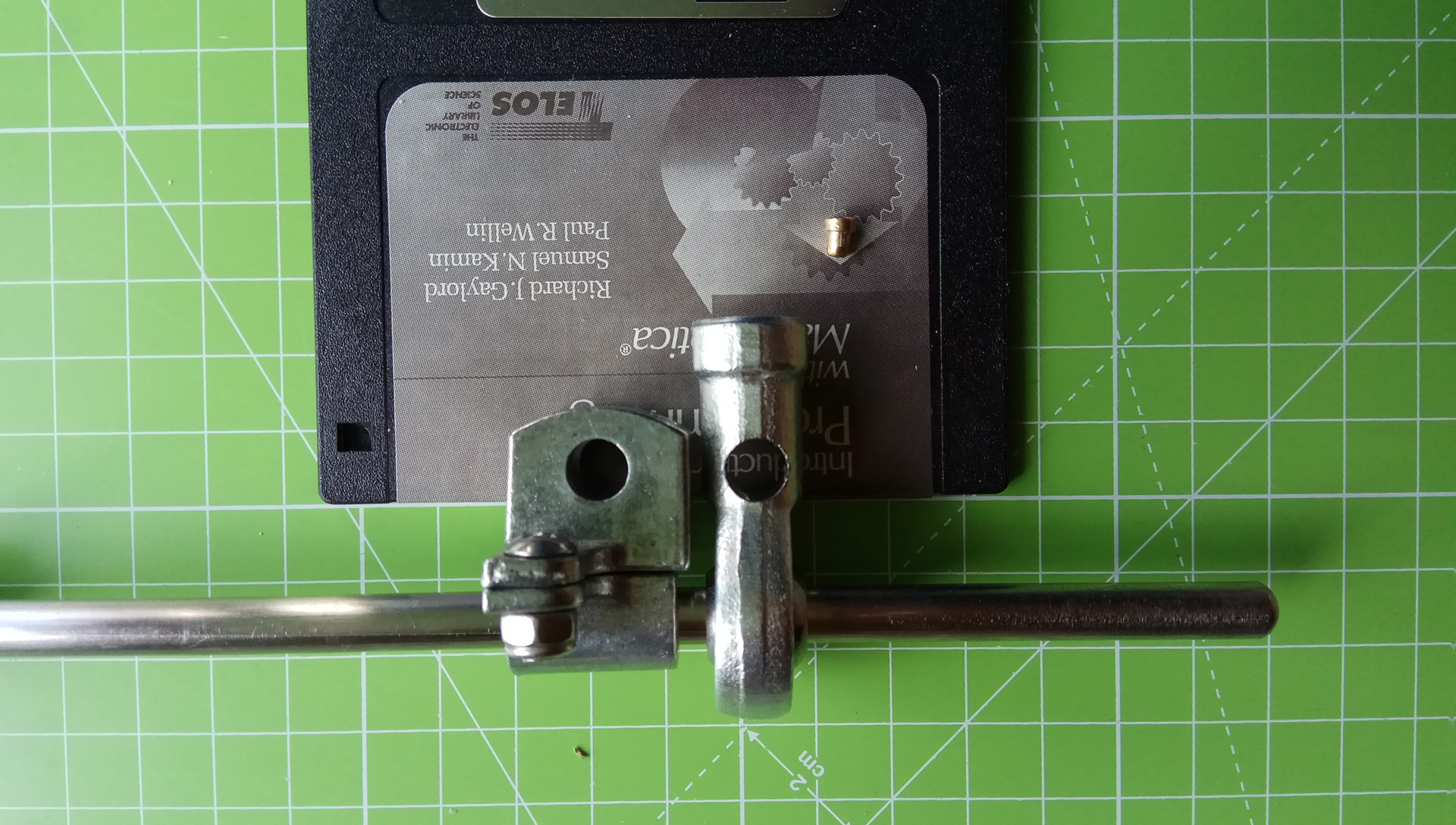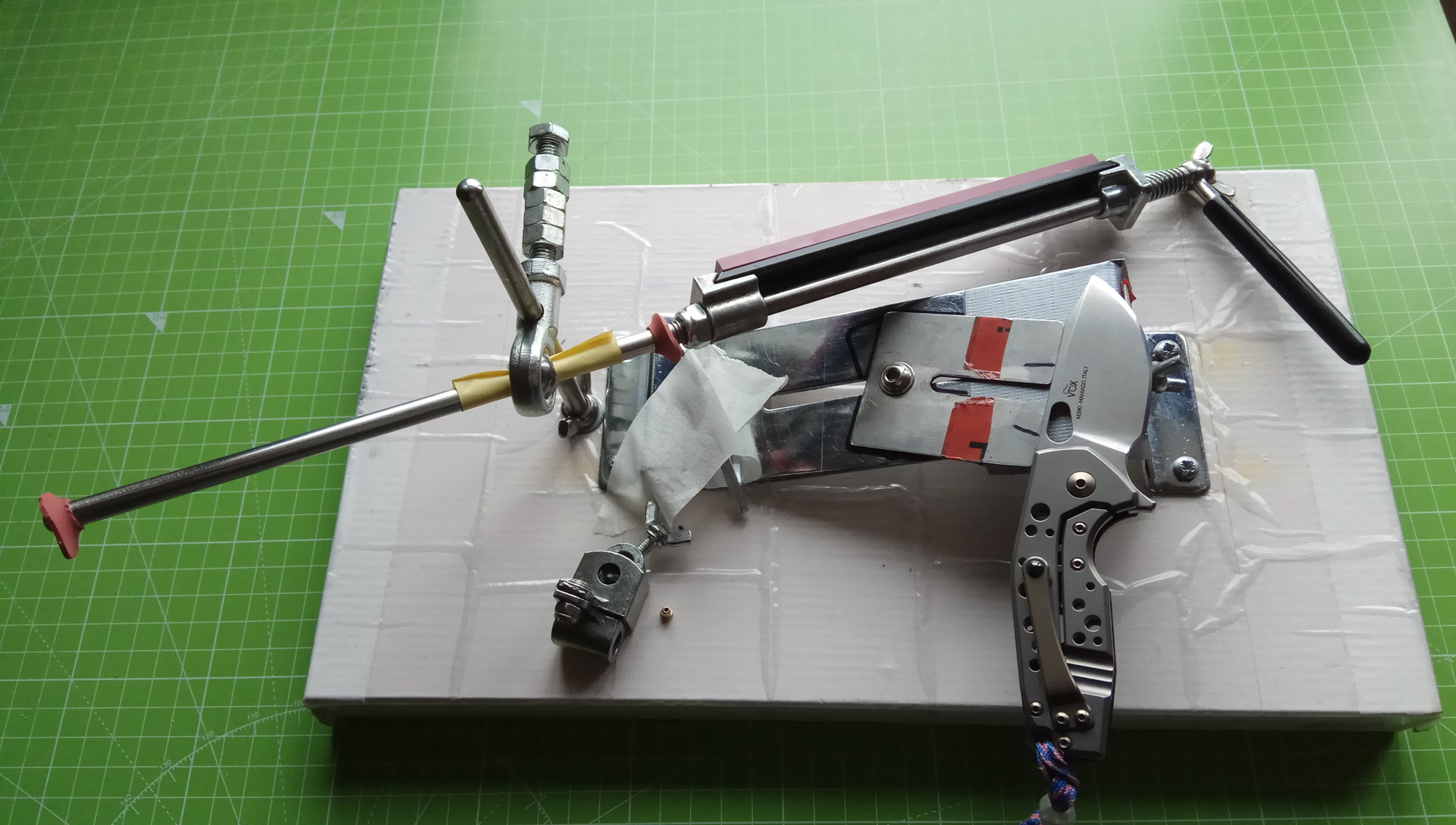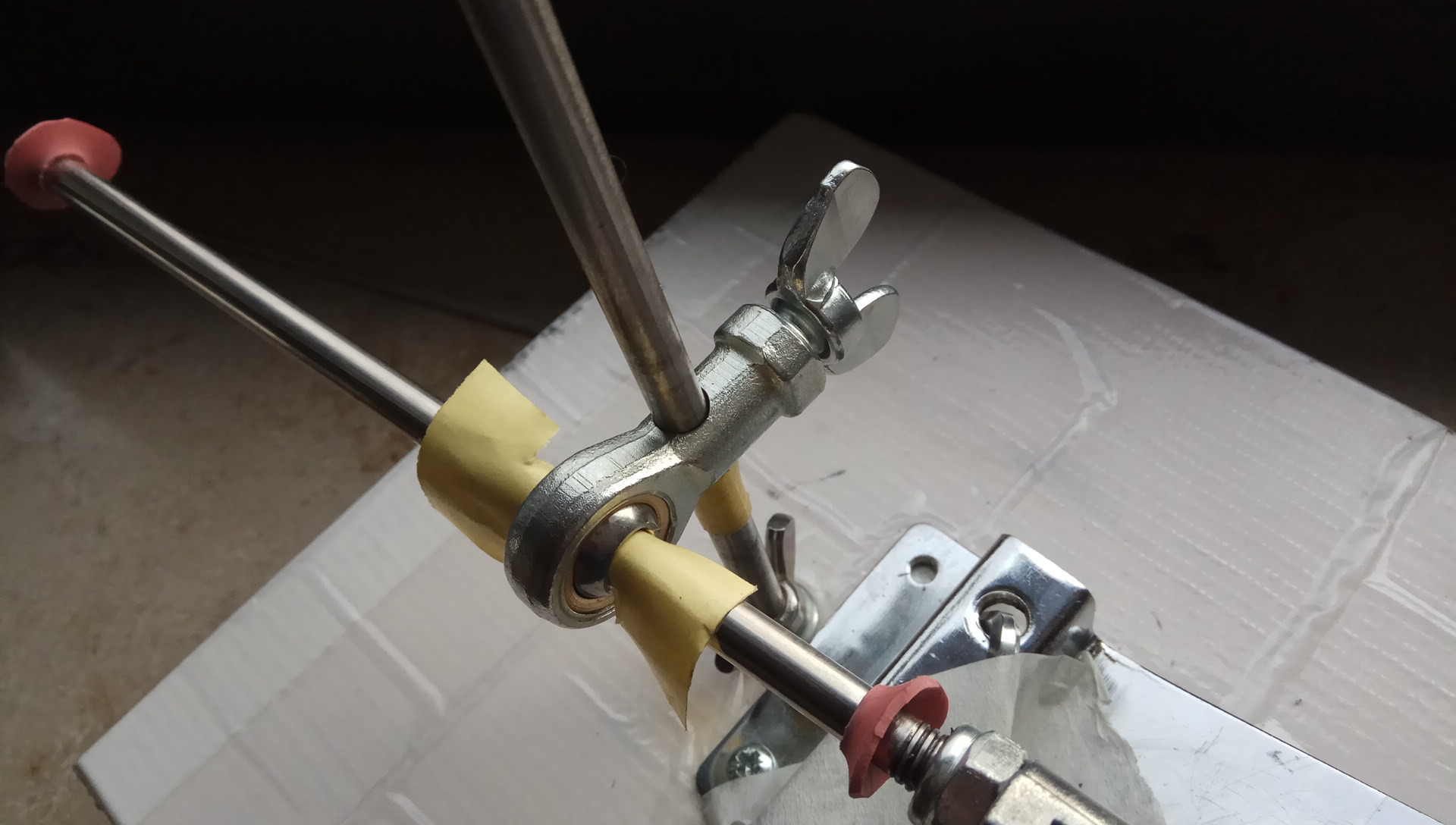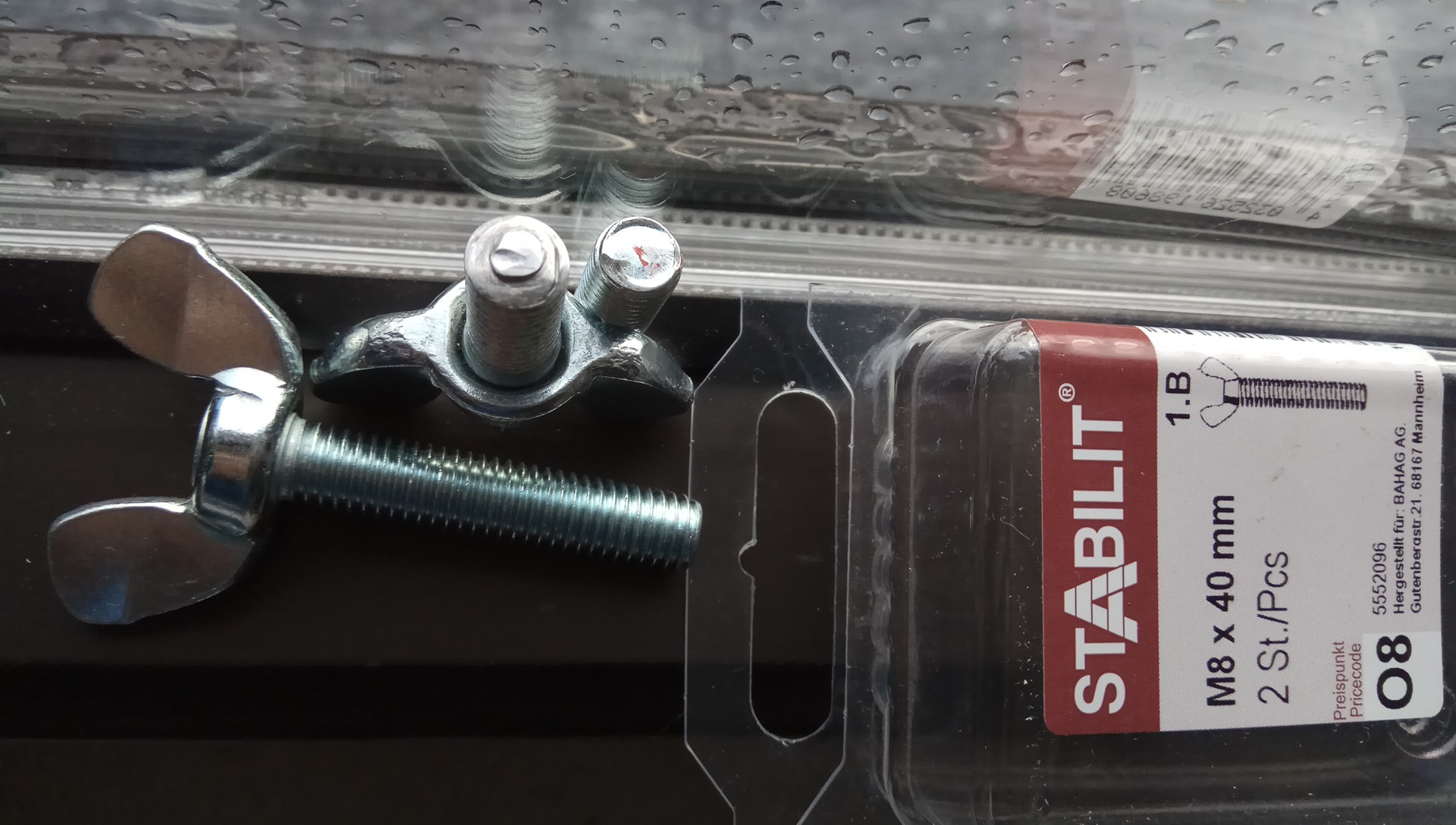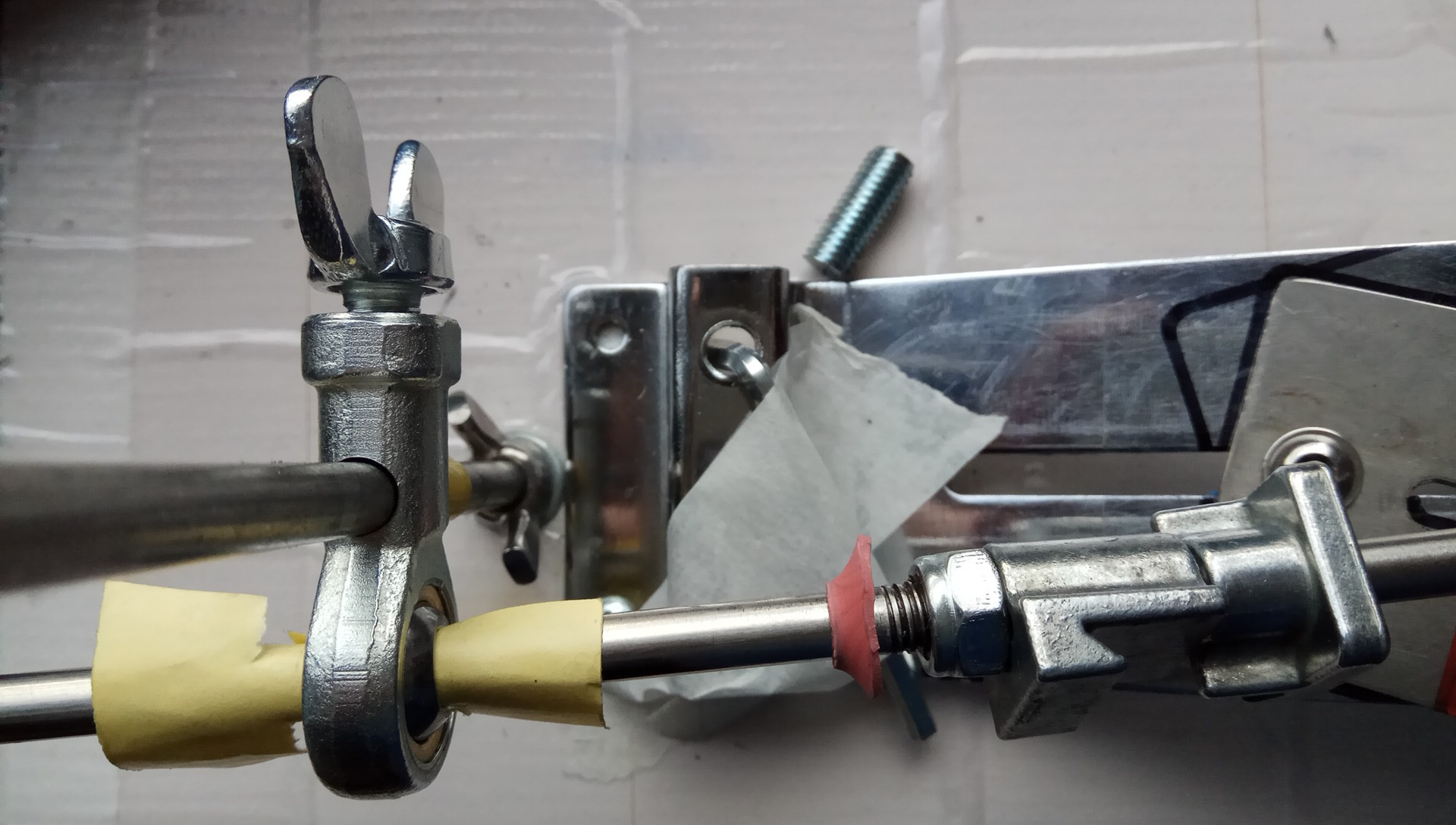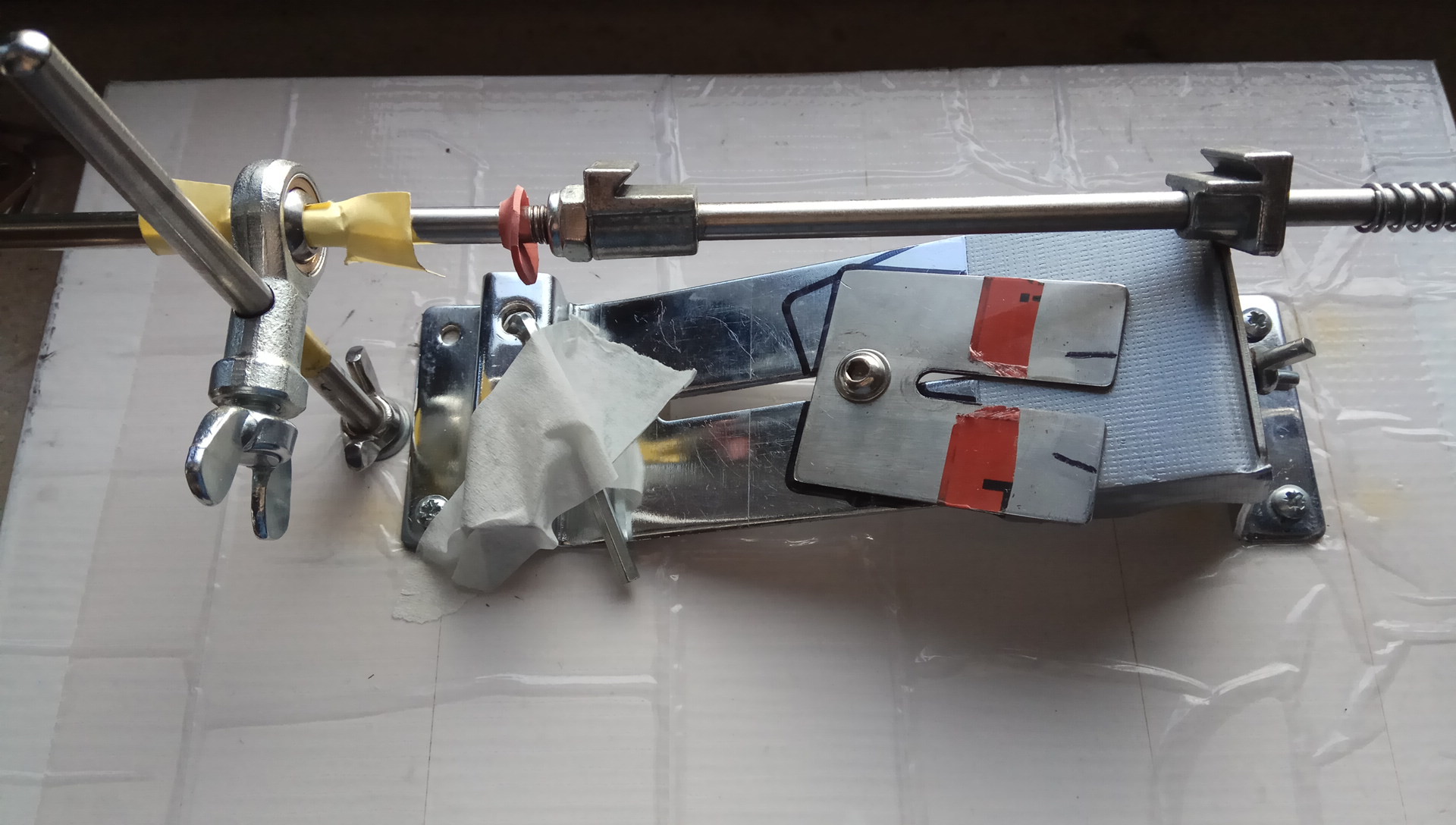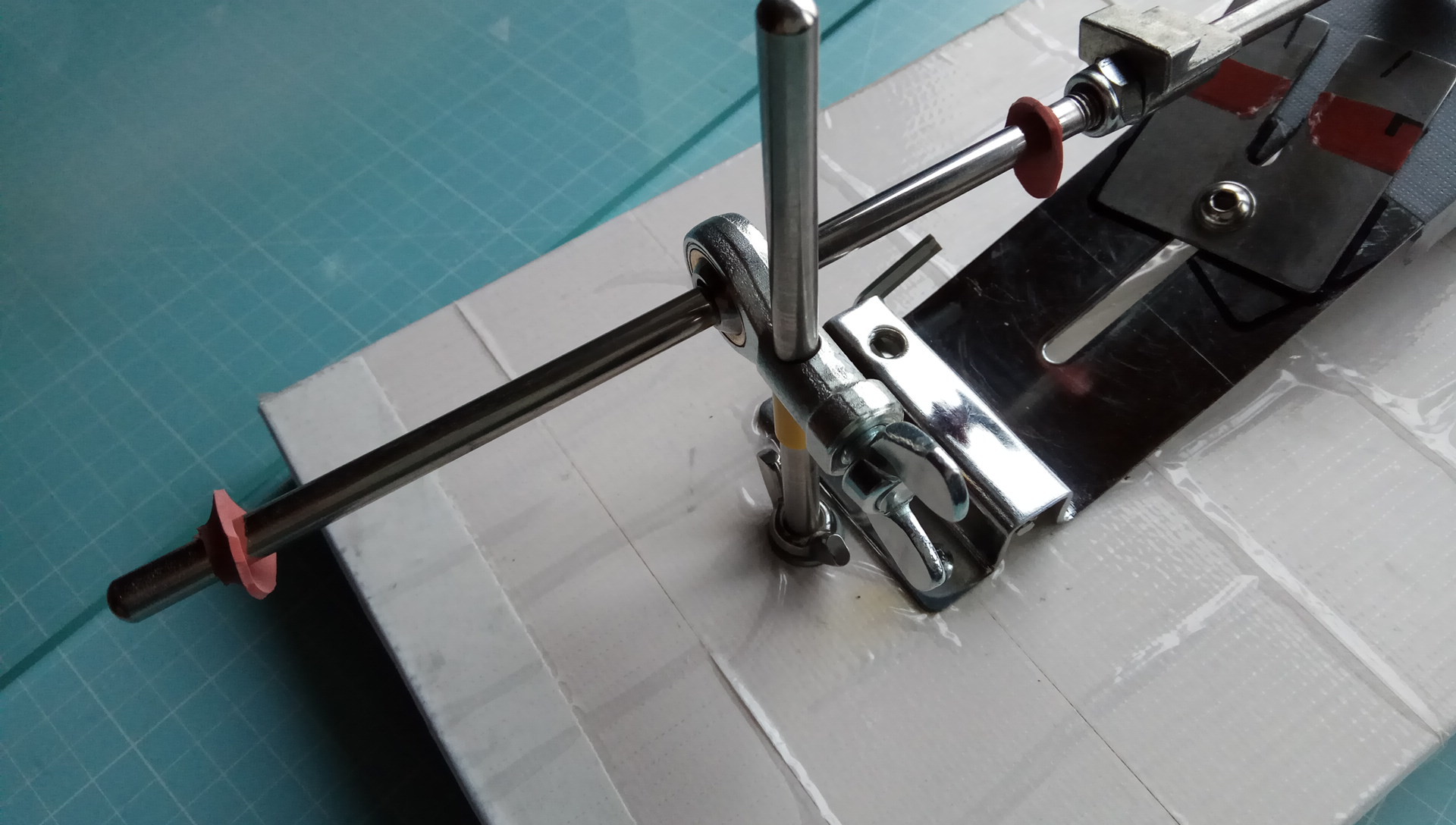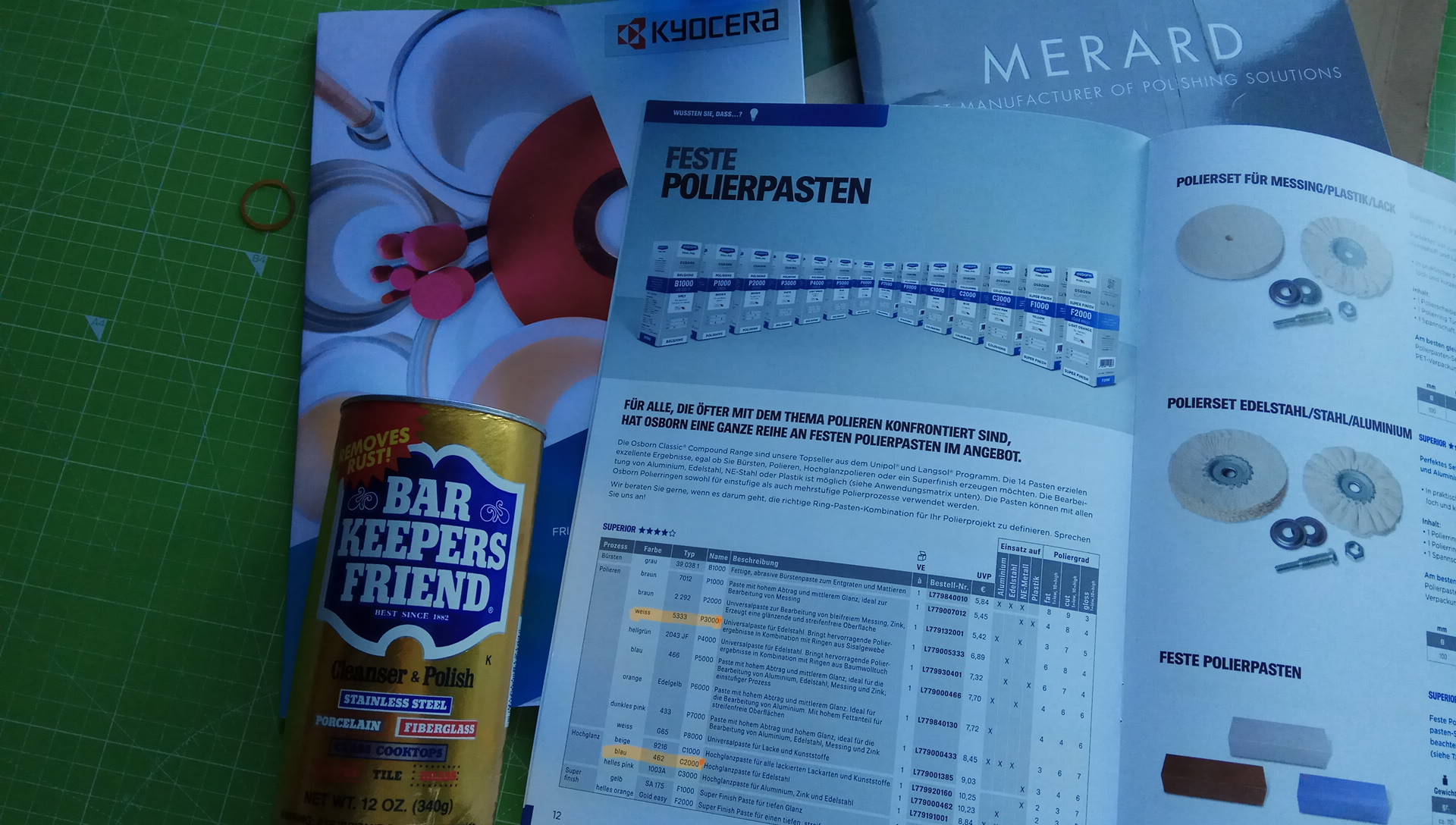but China shippings stopped because of the Coronavirus.
I cancelled the AliX 1$ wing screw order because the order didn't get shipped in days. Instead i went to the local BAUHAUS hardware franchise store and bought a 2pcs-pack of M8×
40mm wing screws branded STABILIT (BAUHAUS's own-label afaik made in the china) for 2.9€, nice price.
The geman dremel was my tool of choice. The 6$ mini vise helped holding the hot screw still. The minimum needed 'length' was 15.0mm, so a nominal 16mm long screw would have the perfect length. I was on the generous side when determining with my pair of calipers where to make the cut:
It took a while to cut through the steel. Iirc i never cut a M8 steel screw with this weakest dremel model before. Cutting the screw with a fresh bladed manual metal saw would have been faster and cleaner than that, haha:
I was relieved to learn that the screw worked 'as is', beautifully: it was easy to manually tighten the screw and secure the part against the vertical rod, in a fixed position, with no complaints. I could have called it a day and moved on. And what a lucky dremel cut: once the screw is fully tightened, its wings happen to be oriented vertically, as preferred by me. Just beautiful, thanks

:
As mentioned, there was no need to mod the dremel-cut screw. I was just curious if a smaller diameter made a notable difference in the hand tightening force, so i modded the screw. Tbh i can't notice a difference, and maybe that's because the actual contacting area isn't smaller in reality. From the location, size (depth), and shape of the indentation caused by the vertical rod, one can learn a whole lot, namely the discrepancy between maths/theory and practice/reality. Look at the indentation on either screw tip:
So modding the screw was in vain. But it looks cool:

Yes, i could/should have cut off ~1.0mm more to reduce the gap in the tightened position, for esthetic reasons. But once i start shortening the screw (say with a metal file), i'd lose the guarantee that in the new tightened position the wings are again oriented vertically. So let's call it a day here and accept this gap:
When i switch the knife blade side on this ruixin unit, i also switch the location of the sharpening rod: i loosen the M8 wing screw, take the part off the vertical rod, don't remove the sharpening rod from the part but rotate the part about the sharpening rod's axis, and re-insert the part onto the vertical rod (and depending on the knife model, i'd also have to swivel the steel plate):
Here you can see that i have swiveled the steel plate from 'left' to the 'right' black-marked position. Also note where i have stowed the wrench: a small magnet (
sourced from a HDD) in there is holding the wrench. I test resharpened and PT-restropped my suru knife on this improved ruixin device and learned that the yellow low-friction paper is not needed to reduce the 1mm play:
As mentioned earlier or compare with Lansky system, in the imho ideal scenario you would perform sharpening (and PT-stropping) strokes always in such a consistent way that the sharpening rod+stone is supported by the blade bevel AND by the
bottom region of the steel ball through hole. Sharpening this way, the
potential 1mm play doesn't pose a problem. However, your very strokes might differ from the proposed ideal scenario ymmv, and if you really need (i.e. want) "zero play" between the Ø
7mm sharpening rod and the Ø
8mm steel ball through hole, then it's up to you to find a workaround. The yellow low-friction paper was my spontaneous idea, you might come up with a better idea or have no alternative idea at all.

So why does the Lansky system have no issues with play (even though everyone can see the
massive play right away)? Because the Lansky user exerts manual downward force
at the center of the stone, i.e.
in between the two supporting points of the rod+stone. On the ruixin it is possible, too, to manually guide the rod in such a way that the steel rod does not get to wiggle within that 1mm play area:
that's what i choose to do, instead of trying to minimize the diameter difference from the get-go. Also, in practice, sometimes having play at your disposal does come in handy, is welcome (or even needed).
Actually the part assembly including drilled hole is directly available from AX (e.g. AX-item "1005002393008925") but it's for the Ruixin PRO RX008, compare the millimeters:
In any case,
imho this new 1.6$ part is a tangible improvement to my previous ruixin pro iii custom setup, and the ruixin manufacturer should substitute the new part for the hilarious original 24511 swivel hinge in ruixin pro iii production units from now on.



 ) but i hardly use it anymore.
) but i hardly use it anymore.  ), so i should use the ruixin a bit more again this year. The PTS method consumes the blade quite fast, so erh .. we'll see how the regular bevel maintenance goes.
), so i should use the ruixin a bit more again this year. The PTS method consumes the blade quite fast, so erh .. we'll see how the regular bevel maintenance goes. 

